20+ Sample Medical Release Of Liability Forms
-
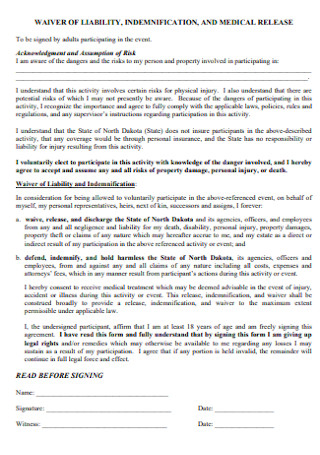
Medical Release Of Liability Form
download now -
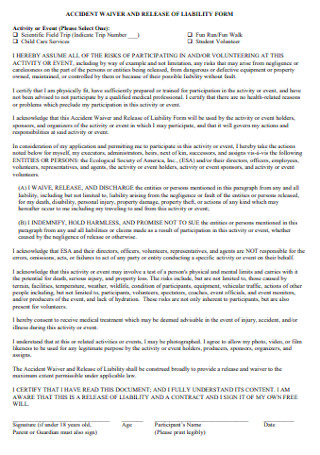
Accident Release and Liability Form
download now -
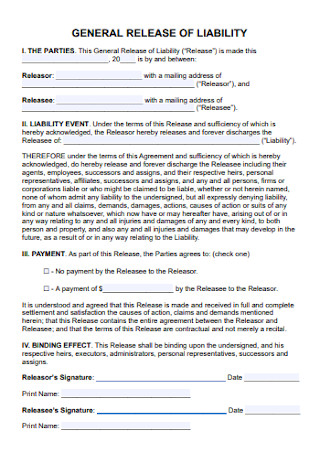
General Release of Liability Form
download now -
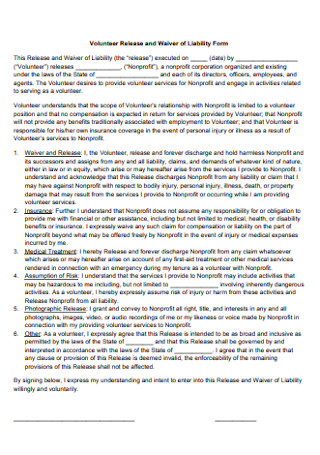
Volunteer Release and Waiver of Liability Form
download now -
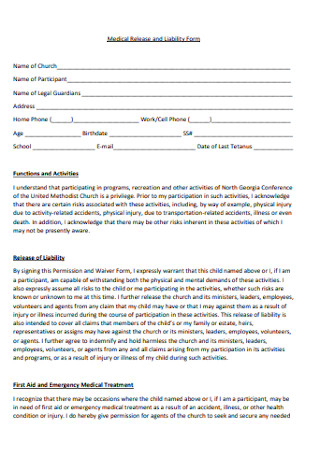
Medical Release and Liability Form
download now -
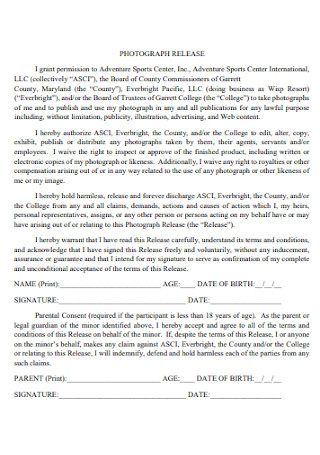
Photograph Release and Liability Form
download now -
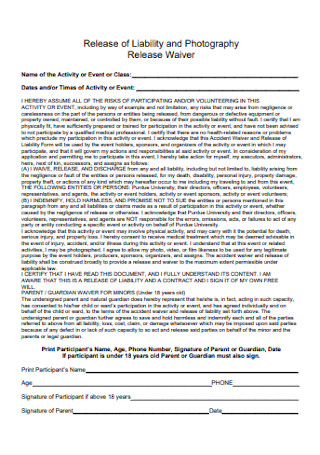
Release of Liability and Photography Form
download now -
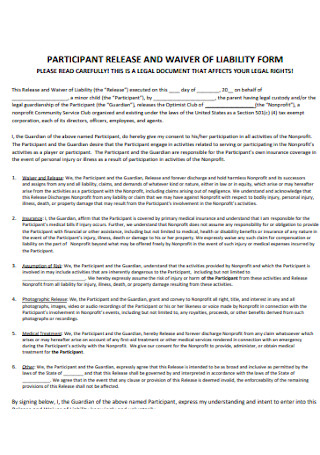
Participant Release Of Liability Form
download now -
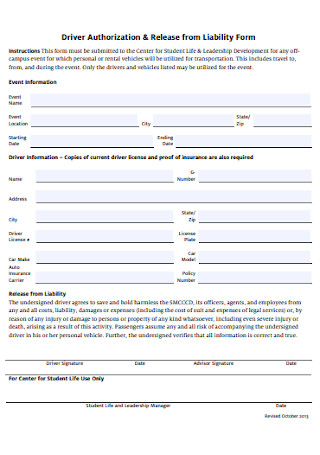
Driver Authorization and Release from Liability Form
download now -
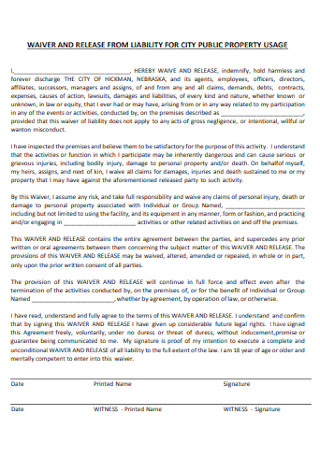
Release Of Liability Form for Property
download now -
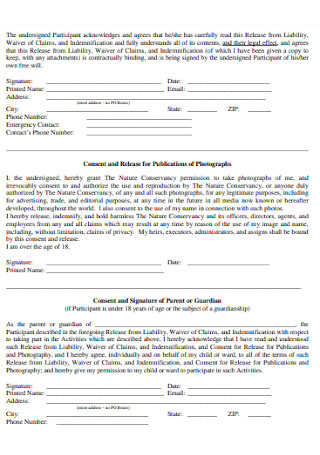
Claim Release and Liability Form
download now -

Cricket Waiver Release and of Liability Form
download now -
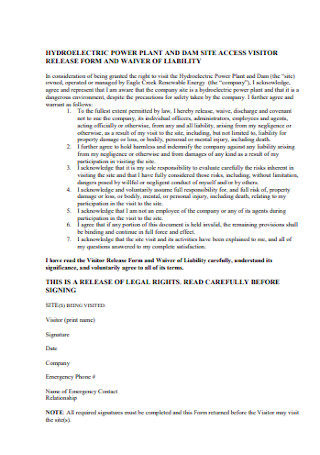
Power Release and Liability Form
download now -
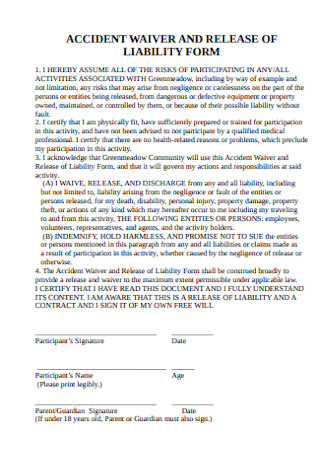
Accident Waiver and Release and Liability Form
download now -

Simple Release and Liability Form
download now -
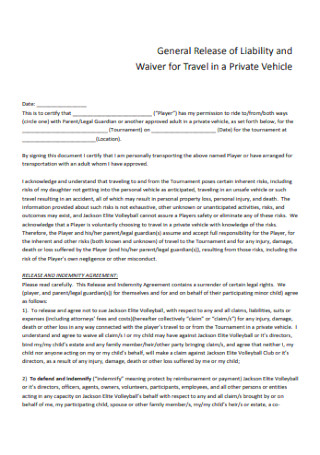
General Release of Liability Form Template
download now -
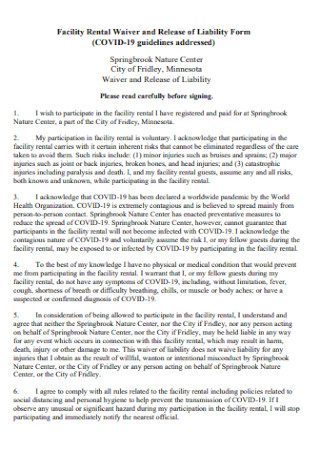
Rental Waiver and Release of Liability Form
download now -
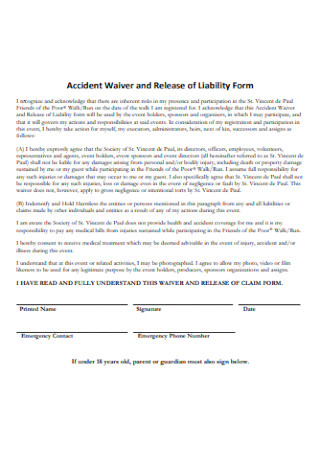
Accident Waiver and Release of Liability Form
download now -

Release of Liability Form Format
download now -

Release Of Generic Liability Form
download now -
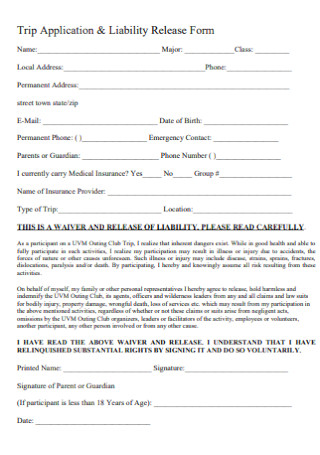
Trip Application and Liability Release Form
download now
FREE Release Of Liability Form s to Download
20+ Sample Medical Release Of Liability Forms
What Is a Release of Liability Form?
Areas Where Liability Release Forms are Commonly Used
Contents of a Release of Liability Form
How to Write a Release of Liability Form
FAQs
What does release of liability mean?
Do liability waivers hold up in court?
Is a release of liability a contract?
Am I liable for a car I sold?
A number of people are still skeptical of its rapid development plan, and there has been debate as to the culpability of vaccine manufacturers. Are pharmaceutical companies, like Pfizer, liable for the side effects of their vaccine? A release of liability form will no doubt help the companies in their push to have more populations vaccinated. At the same time, the inoculated patient must be informed of the possible risks and side effects in the name of public health. The truth of the matter is that any medical procedure carries with it potential risk, especially with regard to emerging studies like the coronavirus. All this then begs the question, to what extent can a vaccine maker be held responsible?
What Is a Release of Liability Form?
A release of liability form is a legal agreement made between parties, that protects an individual or organization from being held responsible for any unforeseen incidents or threat to life. It is a mutual agreement usually made between two parties, referred to as the releasor and the releasee.
The Houston Healthcare Initiative published an online article explaining that if it were not for a vaccine liability waiver, there would be very few vaccine makers, as far as the United States is concerned. These vaccine waivers protect the pharmaceutical companies from liability. According to the article, throughout the 1950s to the 1980s, legal action against vaccine makers increased and subsequently discouraged any promising vaccine manufacturer. Nothing in the field of medicine is completely risk-free and the new coronavirus vaccine is no exception.
Areas Where Liability Release Forms are Commonly Used
A release of liability form can sometimes be referred to as a liability waiver or a hold harmless agreement. Many industries often require liability waivers when it comes to their products or services. The following are a few examples of scenarios where a liability waiver may be beneficial:
Contents of a Release of Liability Form
The content of your liability waiver form depends on the industry or specific activity. But regardless of the event or circumstance, the form must contain the general statement of release of liability. The following are some of the basic items contained in a liability release form:
How to Write a Release of Liability Form
Before writing a release of liability form, make sure you know the scope and range that your industry may be held liable for. This may entail some research. The more detailed your liability form, the more assured you can be of your protection. Follow the step-by-step guide below when crafting your liability release form:
Step 1: Establish the Basic Details
Your form should contain the liability title to inform the reader-releasor, even before he signs it. Include the date, title of the event, description of the service, and enough space for the participant to insert their name and other relevant information. It’s acceptable to create a generic form intended for all your clients. Just make sure they are all uniformed and contain essential company or event details.
Step 2: Describe the Event or Activity
Make sure to lay the specific terms and conditions in your form. Describe the nature of the event or activity. It is important to make the releasor aware of what to expect from the activity he or she is about to participate in. This includes the risk and responsibilities involved. A resort or ski lodge should describe in detail the consequences and guidelines that the guest or user must be aware of. If any untoward incident occurs due to skiing, or happens within the premises of the resort, the lodge should be able to indicate in the liability release form that accidents are outside their area of responsibility. In another scenario, the school administrators should duly inform the parents of minor children that by allowing their child to participate in a school-sponsored field trip, they are not holding the school accountable for any accident that might happen during the trip.
Step 3: Uphold the Agreement
When you have properly itemized and enumerated the conditions, conclude with an agreement statement. This is to confirm the expectation that the releasor who signs it, voluntarily accepts the terms you stated and has taken into account the risks involved. This declaration is important for both releasee and releasor; because it certifies that both parties entered into a mutual agreement. It is the duty of the releasee to protect against any threat of legal action by making certain that the releasor understands the aforementioned terms and conditions contained in the form.
Step 4: Provide Signature Lines
Any formal document requires all parties involved to affirm their obligation by affixing a signature. Make sure to indicate clearly where the releasor should sign and place his printed name. Also ensure that there is enough space at the bottom of the form for witness lines or notary, if applicable.
FAQs
What does release of liability mean?
In the simplest of terms, liability means responsibility. When two parties engage each other either for a mutual cause or common purpose, responsibility binds both but in different capacities. For instance, a company might sponsor a marathon that’s open to the public. Fitness enthusiasts and avid runners sign up and participate. If a marathoner is injured during the course of the run, the sponsor cannot be sued for anything because all participants were made to sign a liability waiver before the start of the race. This waives the right of the runner to protest against the company in court. At the same time, it releases the accountability of the company for the injury.
Do liability waivers hold up in court?
Generally, yes. However, your liability waiver needs to contain specific details and clear conditions if it is to be accepted in a court of law. Any vague, implicit, or weak statements may open the door for legal loopholes or challenges that may work to the others’ advantage. The waiver also needs to be proven and clearly signed by the releasor.
Is a release of liability a contract?
A release of liability is a formal agreement signed by two or more parties. In most cases, it is a contract between a person (i.e., the participant) and an organization or company that the person signed up for. In other instances, it is a contract between a customer or client and a service provider, as is in the case of a business owner and raw material supplier.
Am I liable for a car I sold?
If you are able to serve the buyer with a liability waiver, then you are afforded some protection against lawsuits. It is advisable to fully transfer your car title and registration to the buyer, as soon as you can. Some states require the seller to fill out a Notice of Transfer. It’s best to check with your local government if they require a waiver form for you to sell your car.
Whether it’s used for handling incidents better or having the benefit of insurance, having a release of liability form ready at all times can be advantageous. It not only protects you as a provider or company, but it establishes an understanding with the other party. The liability waiver promotes transparency and informs clients or participants of the necessary precautions and risks, so they have a full understanding of the overall situation. Customize your own liability release form by downloading a template now!
